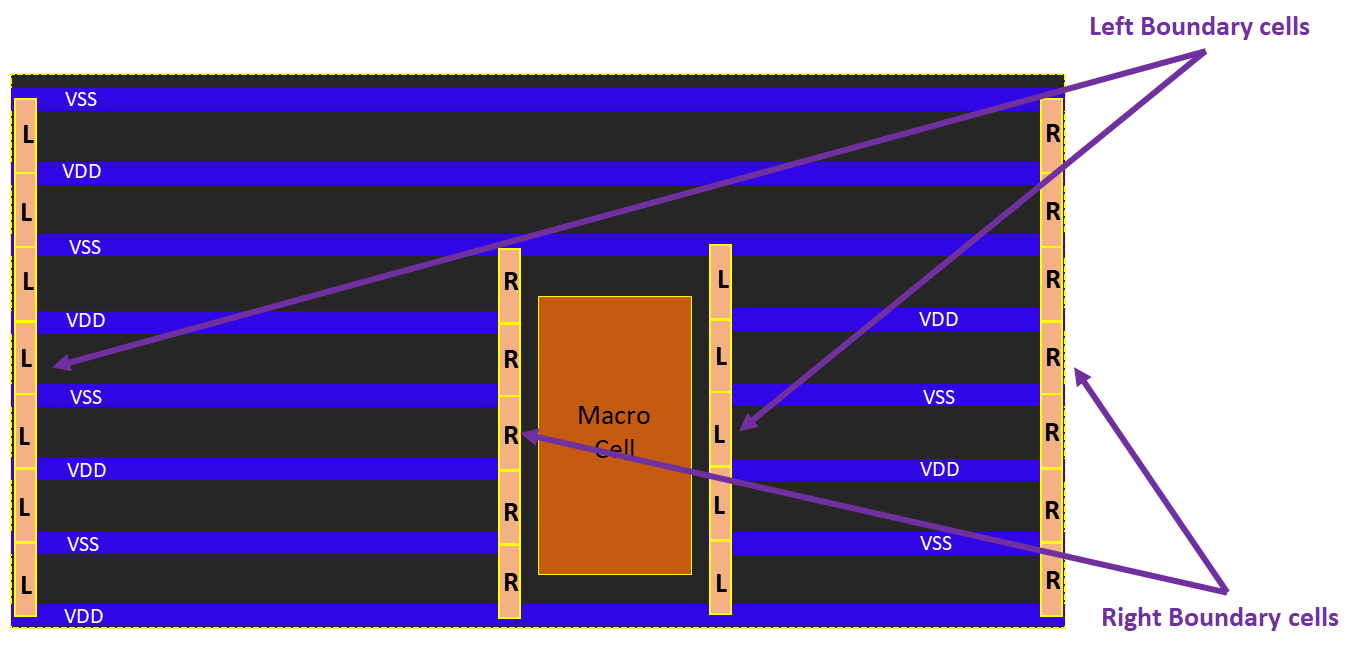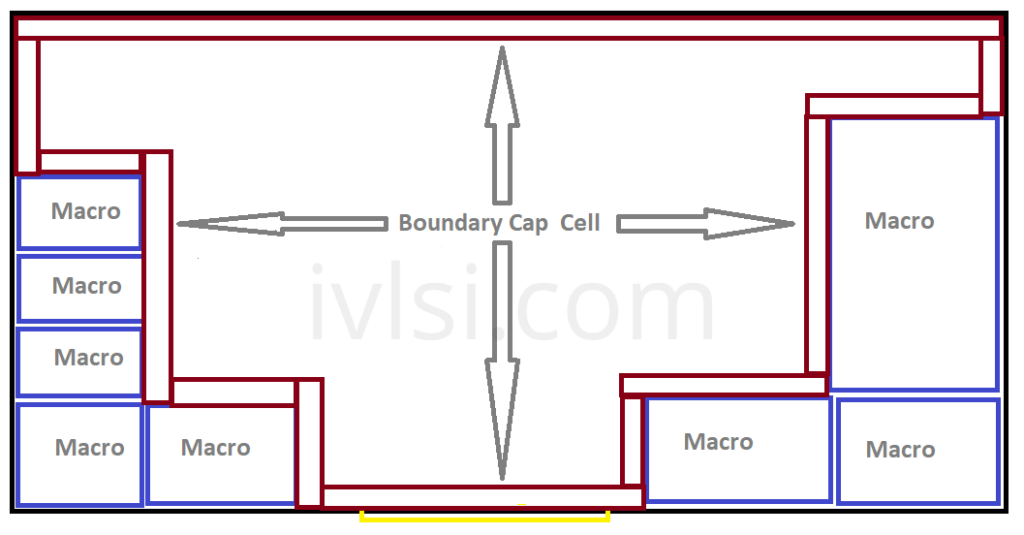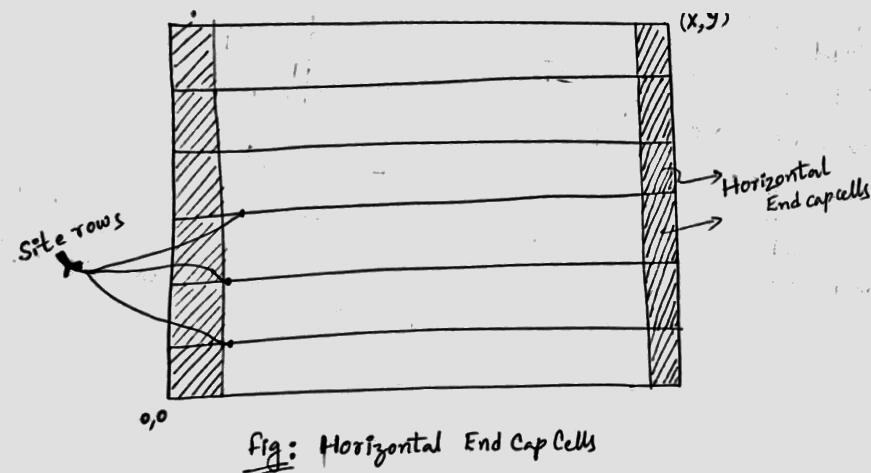Filler cells have the WELL geometries to fill in the gaps. Placements checks Congestion If the congestion is there in your design first check in which region you got the congestion hotspot If it is with cell density u.

Team Vlsi End Cap Cells In Vlsi Boundary Cells In Vlsi
These cells are added before the placement of standard cells throughout the design.

. Tap Cell Placement. Filler Cells Once you have completed placement and routing there are usually gaps left in the layout where you do not have any standard cells present. Well Tap cells are physical only cells which are placed in the design to avoid latch-up condition and maintain VDD and VSS NWELL continuity.
These cells prevent the cell damage during fabrication. Decap cell is basically a capacitor cell which is used temporarily in the design between power and ground rails to counter the functional failure. Similarly endcap cells has the well geometry to make a ring around your core and touching the existing well.
Well tap cells connect the nwell to VDD and p-substrate to VSS in order to prevent the latch-up issue. In Physical design we prefer to add the spare cells using tool command. End Caps End-cap cells are preplaced physical-only cells required to meet certaindesign rules and placed at the ends of the site rows by satisfying well tie-off requirements for the core rows These library cells do not have any signal connectivity They connect only to the power and ground rails once power rails are created in the design.
We cant have functional failure in our design. To avoid drain and source short. You dont really require endcap cells.
It is not possible to abut every cell available as that would cause. ASIC Design Methodologies and Tools Digital L SOLVED physical layout in. These do not have any logical functionality.
These cells are placed at the periphery of the core and power domain. Apr 1 2008 3 R rakesh1234 Member level 5 Joined Dec 12 2006 Messages 93 Helped 13. End cap cells are required for certain technologies which require a well ring around your digital circuit.
End cap Cells. There are various reasons for the instant large current requirement in the circuit and if there are no adequate measures have taken to handle this requirement power. Due to this short circuit condition a low impedance path is created.
Used for row connectivity and specifying row ending. Latch-up basically means a short circuit condition between power and ground. These cells essentially act as a capacitance between power and ground rails and hence as a charge reservoir that can be counted upon while there is a high demand for current from the power lines.
Tie cells are inserted in the placement stage and more specifically at the final stage of placement. Decap Cells Decoupling capacitors are another type of physical only cells used in PD flow. Standard Cells ICG Cells Well Taps End Caps Filler Cells Decap Cells ESD Clamp Spare Cells Tie Cells Delay Cells Metrology Cells IO Design IO Pads Input Output Pads Structure of Pad Implementation Guidelines Pad Limited Design Core Limited Design Types of IO Pads Staggered IO Pads Flip Chip IO Bumps Delay Models Delay Calculation Delay Models.
This prevents DRC violations by satisfying well tie-off requirements for the core rows. Well tap cells or Tap cells are used to prevent the latch-up issue in the CMOS design. The library cells do not have cell connectivity as they are only connected to power and ground rails thus to ensure that gaps do not occur between well and implant layer and to prevent the DRC violations by satisfying well tie-off requirements for core rows we use end-cap cells.
There is no logical function in well tap cell rather than proving a taping to nwell and p-substrate therefore well tap cell is called a physical-only cell. Boundary cap cells are physical only cells. The way of adding spare cells for Innovus and ICC tool has been explained below.
Spare cells can be added either by the netlist or by PnR tool command or GUI too. End Cap Cells. EndCap cells in Physical Design Flow.
Let us continue with the physical only cells present in the standard cell libraries that ease the digital PD flow. ASIC Design Methodologies and Tools Digital A SOLVED Why tap cells End caps Tie highlow cells are used in Physical Design flow. What is Boundary Cap End Cap.
They connect only to the power and ground rails once power rails are created in the design. DeCap Cells in Physical Design Use of Decap Cells in PD. Tie cells are not present in the synthesized netlist and not placed in the initial placement of the standard cells.
Filler Cells Well Tap Cells Decap Cells. So to avoid any kind of functional failure. Boundary cap cells are placed just after macro placement in the floorplan flow.
These library cells do not have signal connectivity. These are used to address boundary N-Well issues for DRC cleanup. Decap cells are basically a charge storing device made of the capacitors and used to support the instant current requirement in the power delivery network.
They also ensure that gaps do not occur between the well and implant layers. END CAP CELLS End cap cells are pre placed physical only cells it has only physical connectivity End cap cells are placed at the end. Thus your transistor will not work as you are expected.
Placement of Spare cells. If the endcap is not kept for the minimum value then your souce drain area may get shorted. Where ever netlist is having any pin connected to 0 logic or 1 logic like A 1b0 or IN 1b1 a tie cell gets inserted there.
Endcaps are needed to ensure that particular transistor will get fabricated properly.

Team Vlsi End Cap Cells In Vlsi Boundary Cells In Vlsi

Boundary Cap Cells End Cap Placement Ivlsi
Physical Only Cells Vlsi Physical Design For Freshers

End Cap Or Boundary Cell Use Of Endcap Cells Placement Of Endcap Cell Layout Of Endcap Cell Youtube
Physical Only Cells Vlsi Physical Design For Freshers
Welcome To The World Of Physical Design Different Types Of Physical Cells


0 comments
Post a Comment